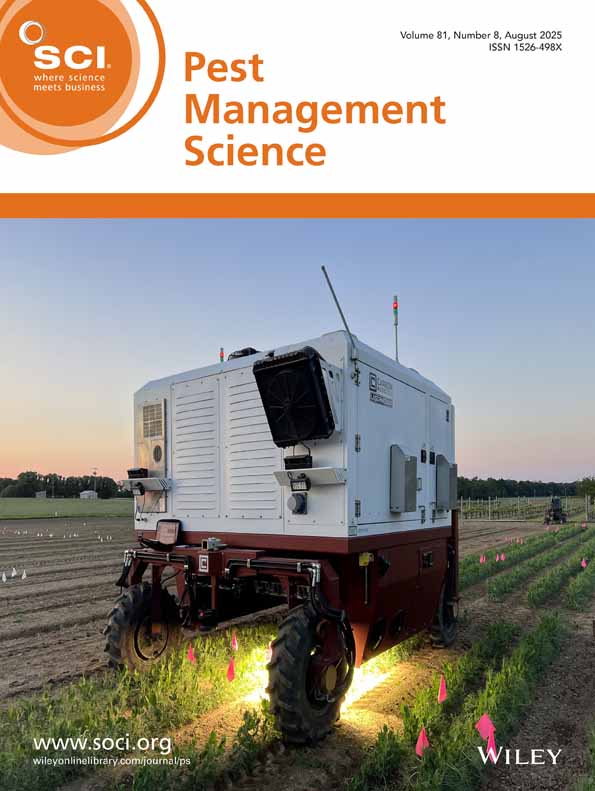N-(pyrid-3-yl)thioureas and derivatives as acaricides. II. Quantitative structure-activity relationships and chemodynamic behaviour
Abstract
The biological activity of a series of N-(pyrid-3-yl)thioureas and -carbodiimides, analogues of the insecticide/acaricide diafenthiuron, towards the carmine spider mite (Tetranychus cinnabarinus Boisd.) and the two-spotted spider mite (T. urticae Koch) was analysed using QSAR methodology. A canonical correlation analysis allowed for the establishment of a prediction model and the identification of outliers within that model. The chemodynamic behaviour of certain compounds in the two series, including these outliers, determined by using photochemical experiments in the laboratory as well as in the glasshouse, was shown to be responsible for anomalous results obtained in the biological tests. It was found from the above study that the biological activity towards both spider mite species is extremely sensitive to the kinetics of formation of the carbodiimides from the corresponding thioureas and to the photostability of the former. The results obtained with a thiourea which underwent no appreciable photochemical transformation into the corresponding carbodiimide supported the hypothesis that the thioureas are also in-vivo propesticides of the acaricidal carbodiimides.




